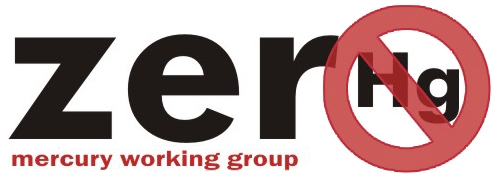A critical element of reducing mercury use and pollution is reducing the global mercury supply. Reducing global supply will help to reduce mercury demand, by raising the price of mercury and making it more difficult to acquire. This result is especially important for lowering mercury uses that are difficult to address directly or through legal restrictions, such as small-scale gold mining. Because mercury cannot be destroyed or converted into other substances, reducing global supply requires reducing and ultimately eliminating international trade of mercury and creating safe long-term storage for existing mercury stocks.
Primary mercury mining is the least preferred source of mercury because it adds new mercury to the global mercury reservoir, and mining activities are significant sources of mercury air pollution. Mercury is currently mined only in China,
Mexico, Indonesia and the Kyrgyz Republic.
The countries that still operate large-scale primary mercury mines, for export are Mexico and Kyrgyzstan. Indonesia mines first to supply domestic ASGM demand, and then for the export market whereas China’s mercury mining is mainly for domestic use at the VCM sector.
Mining other ores such as gold, zinc, lead, and copper can generate significant quantities of by-product mercury during smelting and refining activities. Pollution control devices at metal mines add to the quantity of byproduct mercury by trapping mercury air pollution. Producers of natural gas also capture elemental mercury in order to prevent corrosion of their production lines.
Significant quantities of mercury are generated from collection, recycling and reprocessing of mercury-containing products, and industrial wastes, particularly in the developed world. Reprocessed mercury is a growing source of mercury supply as environmental regulations divert mercury during waste management for safety and environmental reasons.
Particularly large quantities of mercury become available when mercury cell chlor-alkali plants close or convert to non-mercury processes. Capturing and storing mercury from these decommissioning chlor-alkali facilities is an efficient and cost effective way to reduce the global mercury supply because large quantities are already aggregated at one location.
Sources of Mercury Supply 2015 (UNEP 2017 trade mercury report)
| Main Mercury Sources | Metric Tons Per Year |
| Primary (mined) mercury | 1630 – 2150 |
| By-product mercury (from mining other metals, and natural gas production) | 440 – 775 |
| Chlor-alkali residual mercury (from decommissioned facilities) | 370 – 450 |
| Mercury recycling (Recovery of mercury from spent used products, and other wastes) | 1040 – 1410 |
| Government or private mercury stocks | As needed |
| TOTAL | 3480 – 4785 |
Relevant legislation and NGO policy work
Globally
The Minamata Convention on Mercury, Article 3 contains control measures aimed at limiting the global supply of mercury to complement and reinforce the demand reduction control measures in Articles 4-7.
The Article 3 provisions limit the sources of mercury available for use and trade, and specify procedures to follow where such trade is still allowed. Article 3 restricts potential supplies from primary mercury mining and decommisioning chloralkali plants, and seeks to identify any remaining large stocks of mercury.
Primary mercury mining is the least favored source of mercury supply under the Convention because it adds new mercury to the global mercury reservoir, and is itself a significant source of mercury releases into the environment. Mercury from decommissioning chlor-alkali plants was targeted because of the large amount
of mercury potentially becoming available from this sector between now and 2025, the phase-out date for mercury use in the chlor-alkali sector under Article 5 (see Article 5 discussion).
This large quantity of mercury would potentially disrupt demand reduction initiatives in ASGM and other sectors. In the area of trade, Article 3 establishes a prior-informed consent requirement for any trade of mercury to occur.
The relationship and obligations between Parties to trade mercury are specified, and rules governing Party to non-Party trade are also elaborated in this article.
Storage guidance is currently being discussed under the Treaty COP2.
Options for storage were also discussed in each of these regions. Substantial work has been carried out on storage under the UNEP Mercury Storage and Supply partnership. On storage, the ZMWG, under the UNEP Mercury Supply and Storage Partnership, has been giving substantial input on the relevant studies on the Asias and Latin America situtation, since it also was the interim lead of the partnership area. The provided input can be found here
Some countries have gone beyond the Minamata requirements and have banned mercury exports.
In the US, the Mercury Export Ban Act (PDF) (8 pp, 166K, About PDF) was signed into law on October 14, 2008.
The Act includes provisions on both mercury exports and long-term mercury management and storage.
Japanand Switzerlandhave also introduced mercury partial export bans.
In the EU
In 2008, the European Governments agreed on a Regulation to ban mercury export and to safely store the surplus mercury, which entered into place in March 2011.
The EEB with support from ZMWG , has been following the EU debate since 2004, and contributed actively to the development and adoption of the 2008 and 2017 EU Mercury regulation.
Provisions related to trade and supply include:
- Prohibiting the export of mercury and mercury compounds;
- Prohibiting the manufacture, export and import of a large range of mercury-added products;
- Putting an end to all uses of mercury catalysts and large electrodes in industrial processes;
- Reducing the use of and pollution from dental amalgam, which is the last large use of mercury in the EU, and setting out a process to assess the feasibility of a complete phase out of the use of mercury in dentistry;
- Closing the door to future new uses of mercury in industry and in products;
- Ensuring that all mercury waste is safely taken out of the economic sphere, stabilised in a less toxic form and stored permanently in environmentally sound conditions.

